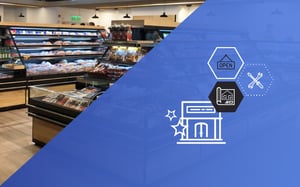If you are planning a store opening, store revamp or regular maintenance then you need to invest heavily in planning your layout and everything that comes with it. After all, a store that is well planned out invites your customers in, provides them with what they need or want and leaves them with a good customer experience.
To ensure that this happens, you need to plan and implement well-thought-out planograms, floor planning, localised assortments and store promotions.
Fail to execute any of the above or even implement them irregularly, and you’re likely to push your customers away. That is why retail execution is so critical to your business. It’s also why we’ve highlighted a few tips for you to mull over.
1. Plan as well as possible
While the adage of ‘Failing to plan is planning to fail’ is an old cliché, that doesn’t stop it from being true. It can also be applied to anything, including the retail industry.
When planning your store, you need to ensure you have the right data, the right software, the right skills and the right processes in place. If any of these factors are incorrect, it will skew the overall performance of your store. And it doesn’t matter if by incorrect; we’re talking about data that’s out by a fraction. It’s still wrong.
After all, imagine trying to properly merchandise your store when the data in your planogram isn’t correct? Or setting up a floor plan when something is missing?
Also, when it comes to planning, try to place emphasis on localised assortments, logical product flows within your planograms, and attractive supplier funded in-store promotions.
2. Integrate your environment
When planning new store openings, store revamps, and store maintenance, it is both easier and more accurate when your software programs talk to each other.
For example, you’ve changed your product range and assortment, but in doing so, your planogram software needs to be updated with the new assortment and range manually. That can pose a problem.
But it doesn’t have to be. Within an integrated environment, this no longer becomes an issue as it will happen automatically and accurately, leaving you to focus on other more important aspects of your store.
Any software that can free you up to concentrate on those aspects of your store that you haven’t been able to focus on should be lauded.
3. Communicate your plans to your stores
Let’s set the scene for a moment.
Imagine you’re a retailer looking to invest in store plans. However, these plans haven’t been properly communicated to all of your stores. Imagine too that you’re a retailer with stores across the country or even around the world.
There isn’t much point in investing in these plans if you haven’t communicated them properly. In fact, you’d be wasting both your time and money if you did.
Ensure that the merchandisers and the staff at your stores receive your plans and understand the instructions on how to implement them. Also, give them time to finish the job properly.
It might take a longer time than you anticipated to implement or cost you more. However, if you don’t communicate it to your staff, it will come back to haunt you. And it won’t just be a short-term monetary cost. You’ll also stand the chance of losing face with your customers.
4. Track store compliance with plans
For all the planning you’ve done to implement store plans, and having communicated them to all of your stores, that unfortunately doesn’t mean they will be implemented.
You will have the odd store either forgetting to apply the plan, or arguing that they haven’t received them. Even if you’ve explicitly told them yourself.
Fortunately, you can track these implementations so that you know who has done it and who hasn’t. That means more accountability and less space for excuses. You can also pick up any issues timeously if there are any.
Also, ensure you have a means to track those implementations. You can do so via time and date-stamped photographs as well as brand questionnaires and other relevant store compliance data.
5. Choose store compliance KPI’s and keep improving on them
Anything worth doing well will take time. That applies to everything, including retail execution.
Considering that you now measure everything, it’s time to set your KPI’s. With these in place, you can go about measuring what you’ve been doing, and you’ll know if something isn’t working. You can also see where to improve if need be.
Just remember, your KPI’s shouldn’t remain static. There is always room for improvement no matter how well your store is doing. And it does have to be big or grand changes. After all, small progress is still progress.
Conclusion
If you want your customers to keep coming back to your store, you need to give them a good reason. In fact, you need to give them more than just one, including having a store that’s easy for them to navigate and an assortment of products that will cater to their every need. Do that, and you can expect a more profitable store.
*Editor’s Note: This blog article was updated on 20 June 2017 for accuracy.


